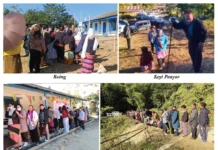ITANAGAR, 20 Sep: National Institute of Urban Affairs (NIUA) along with Borda South Asia and Integrated Mountain Initiative (IMI) organized a webinar on ‘How to Plan Resilient Himalayan Cities’ on Tuesday.
It was aimed at building a conversation about contextual and specialised urban planning for the Indian Himalayan Region and to identify specific areas of investigation and research which can be used as an advocacy and communication tool by the development practitioners, state administrations and think tanks.
During the webinar, Dr. Rajan Kotru started with few statements on Indian Himalayan Region highlighting that climate change related disasters will be the next normal. “All the key cities/towns in IHR are beyond their carrying capacity since long, the ideas about zonation and carrying capacity already emerged even a decade back in IMI organized workshop on urbanization development in IHR. However, we need to look deeper if at all existing data/knowledge/information is actually used for planning and management,” he added.
“The IHR is a transboundary region and our towns which are using the ecosystem services produced elsewhere are part of the overall landscape which has upstream-downstream context as well as a deep connect to how landscape is managed. Hence in the larger design of the things SDGs become key and ‘future collaboration’ between institutions at different tiers of governance becomes inevitable. Keeping in view the ever-increasing risks to sustainable development through current disasters, the practice of responsible tourism becomes significant as it demands that tourism in the Himalaya is offered at a premium price (offering quality to lesser number of visitors at a high end price) with the concept of carrying capacity and inclusive township business plan, while in a digitally connected world the flow of visitors to the mountains should be controlled,” he stated.
It was further stressed that future development and management of mountain townships should be governed by a ‘landscape approach’ that entails stakeholder participation for planning, management and monitoring. The lowest tier of participatory governance i.e., local governance bodies should be further made aware and strengthened to plan holistically as increasingly these bodies are more conscious about their rights rather than responsibility (e.g., waste management, water use efficiency etc. need behavioural changes). At the block level already their plans must be matched with state’s commitment to conservation and development so that convergence is already achieved before the plans go to district level where major public scheme funding are discussed and allocated.
Dr. Kotru also gave some key pointers on what still needs to be researched and analysed to make the concepts of carrying capacity, landscape approach, convergence, and business plan/integrated landscape management plan, being understood and mainstreamed.



